Proof of EffectivenessIn the research paper "Acceleration Test Method for a High Performance Two-Stroke Racing Engine" by Robert Kee and Gordon Blair there is all the info necessary to validate or disprove any software that simulates the return waves from an expansion chamber. They give full engine specs, EGT over the full RPM range, engine power graphs, pipe specs, and the resultant graphs of the measured (not simulated) return waves. Click here to access the pdf file of it. Here is the specs for the pipe: 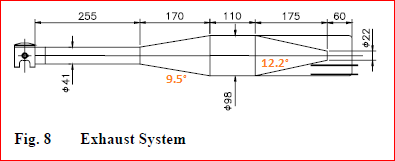 Here is the pipes return waves at 10,000 RPM. Unfortunately they are taken from a transducer located inside the header at 100mm from the piston but I was able to calculate where the waves should be on the graph if the transducer was located right at the exhaust port. (Because return wave simulators show the waves right at the beginning of the exhaust port which is how best to understand their affect on what happens in the engine.) 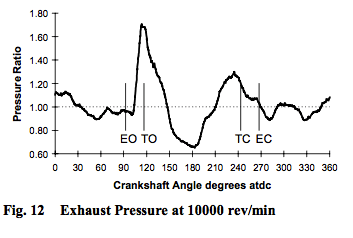 Here is the same graph with the relocated waves as if the transducer were at the exhaust port. Don´t ask me to explain how I did it because it would be too time consuming and you would just get bored anyways. The blue line between the exhaust pulse and the diffuser wave is where the trace would be if the transducer were at the exhaust port. Being located 100mm away made the exhaust and diffuser wave merge which distorted both waves, shortening them. There is also a little merging of the diffuser and baffle wave which is normal and even desired. 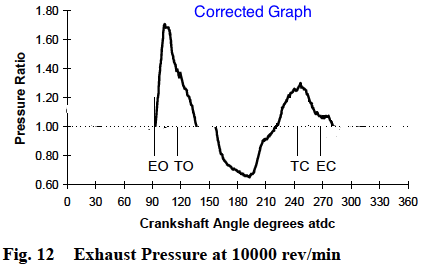 Below are the diffuser and baffle return waves as calculated on ECcalc. The diffuser/baffle wave junction is the same at 2.16 milliseconds and the end of the exhaust pulse is the same. I know the approximate blowdown area of Blairs test engine because my Suzuki 100cc has the same bore and stroke and also has a single exhaust port near maximum width. So using that blowdown area with the exhaust pulse time needed to produce the same 2.16ms crossover time I was able to make a formula for determining the exhaust pulse time just by the engine size and the blowdown area. This is important because the exhaust pulse time affects the return waves time duration. 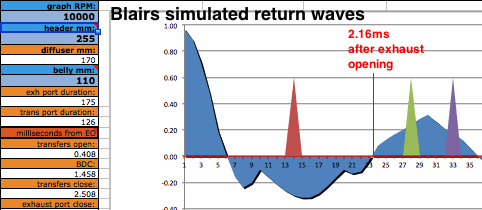 ECcalc has been fine tuned by making its return waves graphs fairly agree with Blairs data. It took me years to find this research paper. Once I obtained it I was able to fine tune ECcalc to simulate the return waves as they return to the cylinder at the correct timing. Without real life exhaust pressure traces this task is impossible. Theories have to be tweaked to match experience. Until that happens they are only unproven theories. Here is Blair's pressure trace at 16,000 RPM which was the best of his 3 traces to show the negative exhaust pulse (in gray) following the positive pressure pulse. At a negative 3.3psi it is 37% the strength of the positive exhaust pulse but almost half of that is from the diffuser wave (blue line) adding on to it so in ECcalc I used 25% which agrees with other return wave simulation programs. 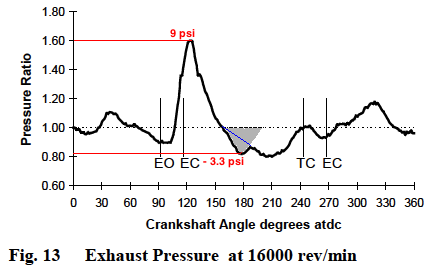 Here is Blair's trace at 10,000 RPM which has a higher peak exhaust pulse because it is very close to the maximum power RPM. I used this trace to proportion the strengths of the diffuser and baffle waves on sheet 3 of ECcalc. (On the vertical scale 1 is atmospheric pressure, and 1.69 is .69 over atmospheric pressure which is .69 times 14.7 to equal 10.3psi) 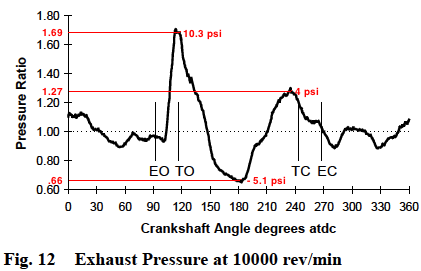 |